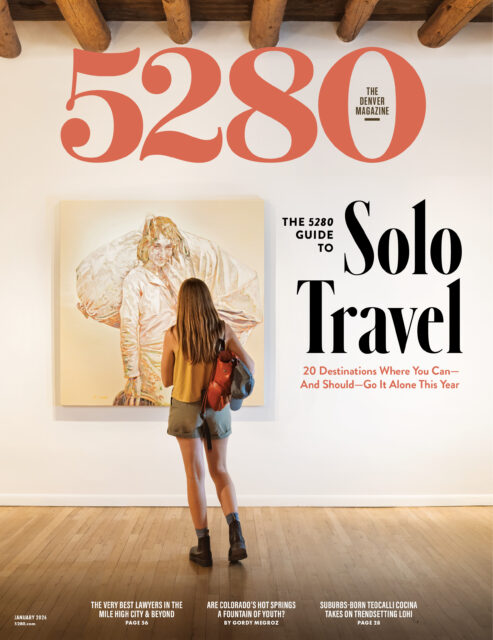The Local newsletter is your free, daily guide to life in Colorado. For locals, by locals.
Update 5/2/19: RTD and Uber announced that all customers in the Denver metro region can now purchase RTD tickets through the Uber app.
Your Uber app is about to look a little different. On Thursday morning, Regional Transportation District (RTD) announced a transit partnership with which commuters can use Uber’s mobile app to find bus and train routes and purchase fare. The new offering, the first of its kind in the country between a ride-share company and a public transportation agency, is part of Uber’s goal of being a “one-stop shop” for transportation needs, according to David Reich, the company’s head of transit.

“Every time the Uber app is opened in Denver,” says Dave Genova, RTD’s CEO and general manager, “people will see transit options, prices, and connections with the ability to plan and pay in one stop.”
The service will expand initially to only five percent of Uber users in the Metro Denver market, but over the next several weeks it will scale to 100 percent, according to a company spokesperson. When riders update their app and log in, they will see “Transit” as an option, in addition to traditional services like UberX and Pool.
According to Reich, Uber considered more than a dozen urban centers—including international options—to launch such a product, but ultimately selected Denver because the city has proven to be “looking to the future” of alternative transportation. Reich would not say which other cities Uber considered nor where such a partnership might launch next, but he noted Uber is planning to do something similar in other metro areas.
The financial terms of the partnership between RTD and Uber are not entirely clear. The benefits to RTD are obvious—Uber is helping sell bus and train tickets, and RTD will gain greater visibility via the app. But Uber ostensibly has less to gain, especially because users who otherwise would have paid for an Uber trip might instead be persuaded to choose public transportation. Asked about this dynamic, Reich noted “It is a risk we’re taking.” Still, he maintained that Uber’s shared goal with RTD is to reduce individual car ownership and to expand transportation access with more options. Reich also noted that because Uber and RTD use the same ticketing platform, Masabi, it was easy to integrate the new transit routes and to keep the purchasing simple.
RTD already has its own mobile app, with which users can plan routes and purchase tickets, and other services like the Google Maps mobile app already integrate public transportation and ride share options, so the concept unveiled Thursday is not entirely novel. Still, riders in and around Denver will be able to streamline their transportation decisions as Uber works to become the preeminent transportation service in the country.
Genova noted that the new partnership is not necessarily exclusive. For now, RTD is only working with Uber in this capacity, but he noted that it’s an open-ended agreement and that something similar could develop in the future with other companies. Ride share partnerships are not new in the Mile High City—last summer, Lyft struck a deal with Denver’s concert venues—and it remains to be seen to what extent this model is replicated in Denver or in other markets.








